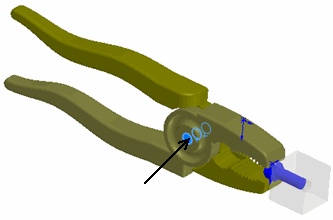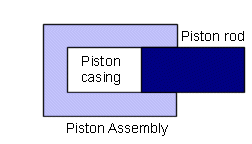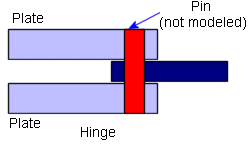An assembly consists of multiple parts connected to each other with pins, bolts, screws, or springs. Examples of assemblies with pins include laptops, scissors lifts, pliers, and actuators. To model the behavior of such assemblies, traditionally, you have to create each pin geometry and apply contact conditions between the pins and their contacting faces, a computationally expensive approach.
In practical applications, often you might want to know the effects of pins on their adjacent parts or the assembly rather than the stress distribution on the pins themselves. For such applications,instead of the traditional approach, you can use pin connectors to represent the behavior of the pins in the assembly virtually.
For example, in the following plier assembly, you can define a pin connector using cylindrical faces that rotate against the pin and go through the two hands. You must allow the cylindrical faces to rotate against the pin but prevent them from moving axially with respect to each other.

When to Use Pin Connectors
 |
For this piston assembly, you can define a pin connector between the inner face of a piston casing and the face of a piston rod. You can use an axial spring to specify the resistance to the sliding of the rod in and out of the casing. |
 |
For this hinge, you can define two pin connectors. The total stiffness is the sum of the two stiffness values. Although the pins appear to be in series, they are treated as if they are connected in parallel. |
 |
Between these partial cylindrical faces, you can define a pin connector. |